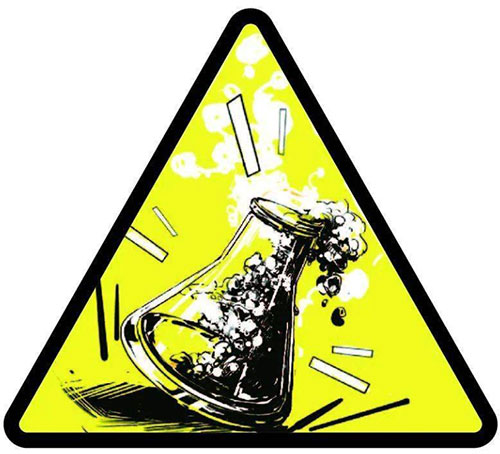Disodium phosphate, also known as sodium hydrogen phosphate, is a chemical compound. Disodium phosphate formula is Na2HPO4. It is widely used in products of daily life, such as food and cosmetics. So, worrying about the risks of using this chemical is reasonable.

I. Potential Risks
This chemical is safe when it is used properly inside the food and cosmetics. However, over-intake is harmful.
1. Nausea and vomiting:
The high amount intake of disodium phosphate will lead to gastrointestinal nausea, vomiting, abdominal pain, regurgitation, diarrhea, and other symptoms.
2. Sodium retention:
Excessive intake will result in excessive sodium ion content in the body, increasing the metabolic burden on the kidneys, and kidney function is reduced. The body will appear sodium retention of water abnormal performance, accompanied by edema, and weight gain symptoms.

3. Arrhythmia:
Excessive disodium hydrogen phosphate into the blood causes arrhythmia, accompanied by tingling and numbness at the corners of the mouth.
4. Convulsions and spasms:
Excessive phosphorus intake can cause hyperphosphatemia, blood phosphorus, and blood calcium concentration, with the symptoms of breath difficulty, body convulsions, muscle spasms, and so on.
A. Interaction with Other Substances
When disodium phosphate interacts with strong acids, it can undergo chemical reactions that may produce harmful byproducts.
For instance, if disodium phosphate comes into contact with strong acids such as sulfuric acid or hydrochloric acid, it can release toxic gases or form unstable compounds. This interaction can pose a significant risk in industrial settings where disodium phosphate is used in combination with other chemicals.

In addition, the potential consequences of such interactions can range from mild irritation to serious health hazards, depending on the nature and concentration of the substances involved. It is important to handle disodium phosphate with care and be aware of its potential incompatibilities to avoid dangerous reactions.
II. Safety Measures and Precautions
When handling disodium phosphate, it is essential to follow certain safety guidelines to minimize potential risks. According to the search results on safety guidelines, here are some important measures to consider.
First and foremost, proper personal protective equipment (PPE) should be worn. This may include gloves, goggles, and a lab coat to protect the skin, eyes, and clothing from accidental contact with disodium phosphate.

Storage is also crucial. Disodium phosphate should be stored in a cool, dry place away from incompatible substances. As mentioned earlier, it is incompatible with strong acids, so it should be kept separate from such chemicals to prevent dangerous reactions.
In industrial settings, workers should be trained on the proper handling and storage of disodium phosphate. Training programs can include information on the chemical properties of disodium phosphate, potential risks, and emergency procedures in case of an accident.
For those using disodium phosphate in food processing or cosmetics, it is important to follow regulatory guidelines. For example, in food processing, the amount of disodium phosphate used should be within the allowed limits set by regulatory authorities to ensure the safety of the products.
In case of accidental exposure, immediate action should be taken. If disodium phosphate comes into contact with the skin, it should be washed off with plenty of water. If it gets into the eyes, they should be flushed with water immediately and medical attention sought.

Overall, by following these safety measures and precautions, the potential risks associated with disodium phosphate can be minimized.
III. Conclusion
Disodium phosphate is a chemical compound with diverse applications in food processing, chemical experiments, and cosmetics. It serves important functions such as acting as a buffering agent in food products, an analytical reagent in chemical experiments, and a pH regulator in cosmetics.
However, it is important to be aware of its potential risks. Excessive consumption or exposure can lead to gastrointestinal discomfort in the short term, and there is some concern about potential long-term health issues although more research is needed to establish definite links. Interaction with strong acids can also pose significant risks, producing harmful byproducts.
To ensure safety, proper usage and handling are crucial. This includes wearing appropriate personal protective equipment, storing it properly away from incompatible substances, providing training in industrial settings, and following regulatory guidelines in food processing and cosmetics. In case of accidental exposure, immediate action should be taken.
In conclusion, while disodium phosphate has its useful applications, we need to be vigilant about its potential effects and use it responsibly. Awareness of its properties and risks can help us make informed decisions and take appropriate measures to protect our health and safety.

